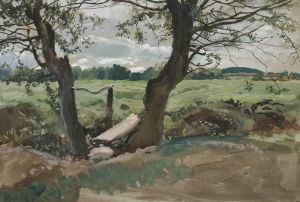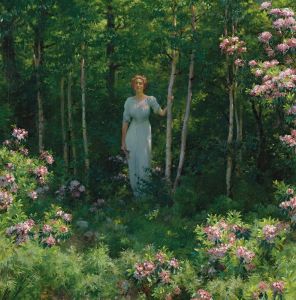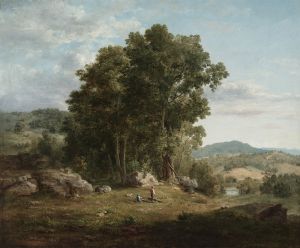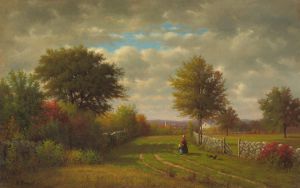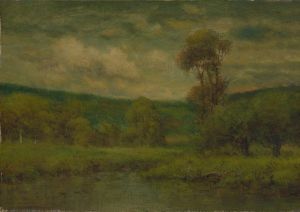
In the Woods
A hand-painted replica of George Inness’s masterpiece In the Woods, meticulously crafted by professional artists to capture the true essence of the original. Each piece is created with museum-quality canvas and rare mineral pigments, carefully painted by experienced artists with delicate brushstrokes and rich, layered colors to perfectly recreate the texture of the original artwork. Unlike machine-printed reproductions, this hand-painted version brings the painting to life, infused with the artist’s emotions and skill in every stroke. Whether for personal collection or home decoration, it instantly elevates the artistic atmosphere of any space.
George Inness's painting In the Woods is a notable example of the artist's mature style, reflecting his deep engagement with the American landscape and his philosophical approach to art. Created in 1891, this work exemplifies Inness's mastery of tonalism, a style characterized by soft, atmospheric effects and a focus on mood and emotion rather than precise detail.
The painting depicts a serene woodland scene, with trees dominating the composition and light filtering through the foliage. The interplay of light and shadow creates a tranquil, almost spiritual atmosphere, inviting viewers to immerse themselves in the natural setting. Inness's brushwork is loose and expressive, emphasizing the overall impression of the scene rather than focusing on individual elements. This approach aligns with his belief that art should evoke a sense of the divine and connect viewers to the spiritual essence of nature.
George Inness (1825–1894) was one of the most influential American landscape painters of the 19th century. Often associated with the Hudson River School early in his career, he later developed a more personal and expressive style influenced by the Barbizon School in France and the writings of Swedish philosopher Emanuel Swedenborg. Swedenborg's ideas about the spiritual dimension of the natural world had a profound impact on Inness's artistic philosophy, and this influence is evident in In the Woods. The painting reflects his belief that landscapes could serve as a medium for conveying universal truths and spiritual harmony.
In the Woods is housed in the collection of the Art Institute of Chicago, where it continues to be appreciated for its evocative beauty and its representation of Inness's artistic vision. The work is often praised for its ability to convey a sense of peace and introspection, qualities that are hallmarks of Inness's later works. Through his use of color, light, and composition, Inness transforms a simple woodland scene into a profound meditation on the relationship between humanity and nature.
This painting is a testament to George Inness's legacy as a pioneer of tonalism and a key figure in American art history. His ability to blend technical skill with philosophical depth has earned him recognition as one of the most important landscape painters of his time.





